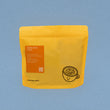TECHNICAL DETAILS
Origin: Costa Rica, Los Santos, San Marcos (exactly here)
Process: Semiwashed
Altitude: 1,800-2000 masl
Varietal: Catuai, Catigua
Producer: Río Jorco
Harvest: 2023
Taste notes: roasted almond, chocolate, red wine
WHY DO WE LIKE IT?
Another coffee arrives at Hola: a Costa Rica with a creamy and long-lasting texture in the mouth. Its flavour reminds us of chocolate, with a slight aftertaste similar to that of red wine. It is a coffee that goes well on its own, but with milk its toasted almond notes stand out.
RECIPE
You can prepare it in your Italian coffee machine or if you have an espresso machine:
Use 16 grams of dry coffee to extract 36 grams of total brew in a cup in a time of 25 to 29 seconds.
Variables to take into account:
- TEMPERATURE: 92,5 C
- PRESSURE: 8.5 Bars
- MACHINE: La Marzocco Linea PB
- GRINDER: Mythos 1
- WATER: 70 ppm
STORY BEHIND THIS COFFEE
Rio Jorco is a true phoenix story. The farm and mill have a long history of producing one of the most consistent, representative and accessible coffees in Tarrazú, Costa Rica. After many, many years of making a name for itself and setting a high standard for coffee production in the area, its management began to run into financial problems due to poor decision making. The project reached such a point that Rio Jorco had to be sold. Recently, Carlos Castro, a farmer and philanthropist, acquired the project to support the surrounding community. Since Carlos' family took over the project, it has truly flourished, not only in business, but especially in plantings and the wellbeing of the mill. Together, with Carlos' daughter, her husband, Yendry, and his right-hand man, Gerardo, they have turned Rio Jorco around and even improved its reputation.
VARIETY AND PROCESS
The variety of this coffee is Catuai and Catigua. The Catigua variety because it is a plant with positive characteristics: it produces well, is fairly disease resistant and gives a good cup profile.
The process is semi-washed. Once all the coffee fruits have been collected, measured and paid for, the team transports them to the wet mill for processing. The next morning, after a light fermentation in the fruit, the cherries are passed through a pulper and placed in a large siphon to ferment dry for the rest of the day. In the evening, the parchment is covered with fresh water and left to ferment under water overnight. The next day, the parchment is stirred vigorously in the water to loosen as much of the mucilage from the skin as possible. The siphon is filled again with fresh water, this time much less, for a final rinse to ensure that the parchment is free of mucilage. The coffee is then taken to the patios for a pre-drying phase in the sun in a medium-thick layer, which is moved every two hours. Finally, the parchment is moved to mechanical dryers called 'guardiolas' when it reaches a certain moisture content to finalise the process and obtain an extremely precise final moisture level.




